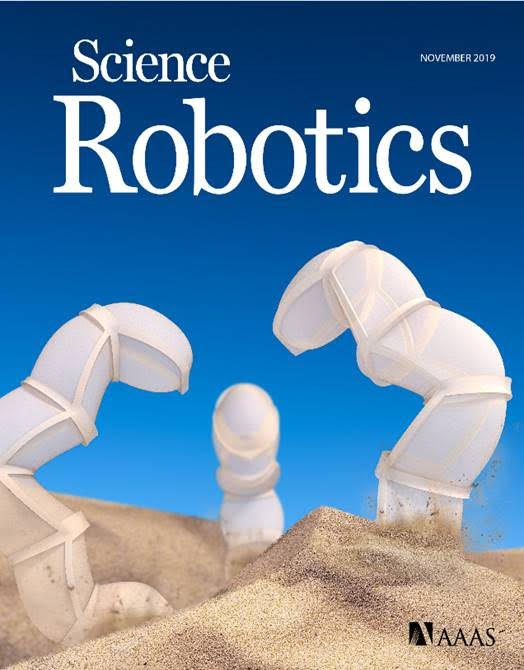Department News
Prof. Kyu-Jin Cho's Research Team developed stretchable origami that embodies dual-morphing of unfolding and stretching
Author
관리자
Date
2019-12-02
Views
797

SNU researchers developed stretchable origami that embodies dual-morphing of unfolding and stretching
SOrigami: Pelican Eel inspired Stretchable Soft Origami RobotIn a paper published Nov 27 in Science Robotics, researchers at Seoul National University (directed by Professor Kyu-Jin Cho) and Rebikoff-Niggeler Foundation have created a new class of origami that is made of soft materials, inspired from an inflating head of a fish that lives in the deep sea.
The Pelican eel, a fish that lives 1000 meters below the ocean, can inflate its head like a balloon. The researchers captured a video of this behavior and discovered that such eccentric morphing comes from its head’s folded geometry and stretchable skin. To mimic the pelican eel’s head, the researchers made a stretchable ‘origami fish base’ (a basic origami base in the shape of a fish) and inflated it to show that the coexistence of two morphing modes, unfolding and stretching, can create extreme shape morphing.
“Soft robots stretch their skin to change shape, while origami architectures unfold to transform. Our work superimposed those two morphing principles by designing soft and stretchable origami architectures, named SOrigami”, said Kyu-jin Cho.
The researchers implemented the bioinspired principle into two types of origami structures: Miura origami polyhedron and Yoshimura origami cylinder. The origami structures were entirely made of soft elastomer. Their geometric and elastomeric designs of fluid networks resulted in a quasi-sequential morphing, in which the whole body first unfolds and deploys, and then stretches to undergo soft robotic motion, such as bending.
As potential applications of SOrigami, the researchers demonstrated soft machines that exhibit deployment-combined underwater motion, crawling, and adaptive gripping. These robots can be stored in a compact space and deployed when needed; and then easily stored back to its original shape. The design principle for SOrigami offers a new platform for shape-morphing systems that can be used to realize bioinspired morphing mechanisms, portable soft robots, biomedical devices, and active metamaterials.
"The bioinspired principle provides guidance for designing adaptive and extreme shape-morphing architectures that are very compact when folded, but can deploy to carry out tasks, and then folded autonomously," said Cho, “By using the dual-morphing principle of SOrigami, we achieved unexplored realms of kinematic features, locomotion and gripping mechanisms, and biomimicry.”
###
Kyu-jin Cho is also a director of Soft Robotics Research Center (SRRC).
This research was supported by the National Research Foundation of Korea (NRF) (NRF-2016R1A5A1938472), the Technology Innovation Program (10051287, Development of fundamental technology of soft robotics for advanced soft gripper) funded by the Ministry of Trade, Industry and Energy (MOTIE, Korea), and the KIST Institutional Program (Project No. 2V07080-19-P073)
Youtube " target="_blank" rel="noopener">
Articles
Maekyung: https://www.mk.co.kr/news/society/view/2019/11/996024/
Robot newspapers: http://www.irobotnews.com/news/articleView.html?idxno=18922

